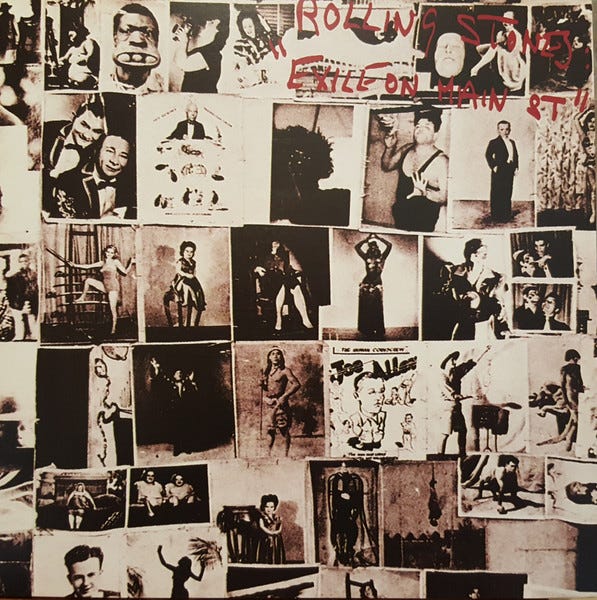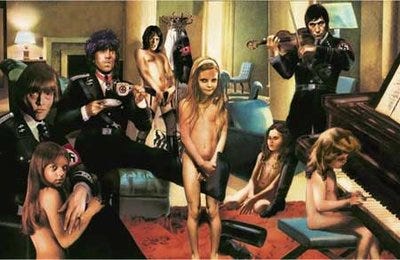The mythical star of The Rolling Stones’ 1972 album Exile On Main St is Nellcôte, often known as Villa Nellcôte. The structure was built in the 1890s by a banker Eugene Thomas. Eventually, in 1919, the property was purchased by the Bordes family, shipowners who transported sodium nitrate between Chile and France. In the 1940s, Nellcôte became the local headquarters of the Gestapo during the Nazi occupation of France. Floor vents were rumored to be decorated with swastikas, which may be accurate. Still, most believe it is a coincidence because the swastika was a typical design in the era of the Belle Epoque.
Keith Richards leased Nellcôte from April 1971 to October 1973. He had to move out due to narcotic issues in France in August 1971. On top of that, Keith had to pay rent for the property until 1973. The current owner of Nellcôte is a Russian national who paid 128 million dollars in 2005. That is here or there; what is important is that the Stones recorded Exile On Main St in the basement, and one can presume where the Gestapo tortured or killed people.
The image above from Messynesschic.com
Once Keith and his family moved in, it became a 24-hour party location with drugs supplied by the Corsican mafia. And it is here that the Stones recorded what many consider to be their greatest album. I personally find it a dull listening experience at times. Still, the history of the Nellcôte recordings is a historic and romantic, almost movie-screen-like imagery of rock n’ roll decadence at its most deviant and satan-like. If I were told that Their Satanic Majesties Request or even Aftermath or Let It Bleed was recorded there, it would make perfect sense. But hearing the music that came off Exile On Main St, it doesn’t sound very French nor Nellcôte-like. And especially not Gestapo-like. Even though Brian Jones did wear an entire Nazi outfit for a Munich photo shoot, and of course, there is the decadent imagery by Guy Peellaert where he had the Stones look like there is a film by Visconti, The Damned, which of course, one can imagine the location Villa Nellcôte.
The boring truth is most of the album was recorded in Los Angeles at Sunset Sound studio. And to be more honest, the record sounds very much like a Los Angeles recording. I remember when I first bought the album when it came out in 1972, and I thought I liked it because my friends loved it. But I quickly realized that something was missing in the tracks, and it’s the magic thing that the Stones had, especially in the Brian Jones/Andrew Loog Oldham years. Also, I was turned off by the hype in the media and fellow music lovers who bought in the whole decadent Keith thing wholesale. I liked songs here and there, but as a double album, it sounded like too much of the same thing. But now, I recently purchased a new copy of the album, and I wanted to hear it in my 2022 ears, as well as a gentleman of the age of 67.
The first cut, Rocks Off, combines dreamy sexy, especially that psychedelic middle part that builds up and goes back into the chorus. I’m presuming that this is a Jagger lyric because it is what I ‘think’ is his work. The words are exquisite, expressing a druggy sense of time and place but mixed with lazy sexuality. It is almost like an Andre Breton Surrealist poem, and in that case, Rocks Off is almost French-like in that Nadja sensibility. Rip This Joint, the second track, is fast, like a speeding train going off the tracks. Which, in this case, is very good. Casino Boogie is another excellent lyric, “Dietrich movies, close up boogies/ Kissing cunt in Cannes. For the first time in my life, and after 50 years (this is the 50th anniversary), I’m reading the lyrics which are challenging to understand through the music or the density of their sounds. I’m now thinking there is a need for a Mick Jagger lyrics book. The music is OK, but his lyrics are superb on this album.
I think songs here can be disposed of, such as Keith’s Happy and that crappy Holetown Sweet Virginia, which slows the album down to a stalled car off the freeway. And there are spots here and there that scream out the need for a talent like Jack Nitzsche, but alas, it is what it is. I feel that this is more of a Mick Jagger album than a Keith one at the end of the day. Keith supplies the backstory drama, but I suspect that Jagger took all the puzzle pieces and fitted a proper-sounding album. It comes to mind how people say it sounds dirty or even mushy and lo-fi, but this is a very proper sounding recording to my ears. This is not an eccentric piece of work or recording. This is not Joe Meek or low-fi Syd Barrett’s The Madcap Laughs. The producer Jimmy Miller is a highly talented record-maker, and on all the albums I know of, such as the Traffic recordings and Spencer Davis Group, his work is superb.
The hype around this album is a real turn-off to me. I don’t know why I take it so seriously, maybe because it sells the talent behind these recordings as drug-fiends who are fried out of their minds. I don't know which, perhaps the case, I don’t know, but when I listen to Exile On Main St, I hear a very disciplined album. The tedious aspect of its history is mirrored in the rock n’ roll myth. It takes a work of art as a mediocre practice. Exile is a very good and even classic-like album. But in no manner is it better than Their Satanic Majesties Request. That album expresses adventure and decadence. Exile is a work of craft, skill, and vision to sell an image of a band that is not what it used to be. And here lies the Hey Rube!, speaking in Carny talk. It pretends to be an outsider instead of being a mainstream member. The Rolling Stones, being tax exiles, is not precisely the same as being on the run as a criminal. You can shine the object to make it more romantic, but eventually, the source material is blasé. The images by the photographer and filmmaker Robert Frank are the riches expressing an underground American life on Exile’s album packaging. Still, the Stones will never outshine a master such as Frank. Still, Exile is pretty good.





